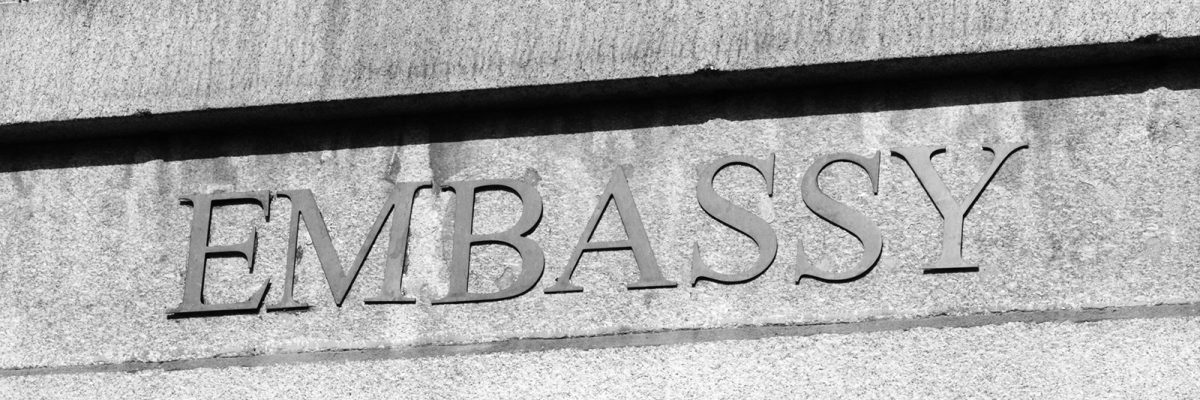Diplomatic Activities in World Cities: Presence Matrix
Peter J. Taylor and Kevin Matthews
The data were collected at the Metropolitan Institute, Virginia Tech (2004)
The data collection method was based upon that used for GaWC Dataset 11.
These data constitute the basis of part of the analysis in Leading world cities: empirical evaluations of urban nodes in multiple networks (first published as GaWC Research Bulletin 146) and New political geographies: global civil society and global governance through world city networks (first published as GaWC Research Bulletin 149).
The cities used in the data collection were the 315 from GaWC Dataset 11. Using worldwide Embassy database www.embassyworld.com, the diplomatic networks of the 133 capital cities in the list of 315 cities were traced across all 315 cities. To create the matrix, the world capitals are the sending cities (like firms in Dataset 11), represented on the columns of this matrix. Conversely, all world city network cities are potential receiving cities, represented along the rows of this matrix. This matrix depicts which capital cities have diplomatic presences in which cities of the world city network. A binary code was used to represent a diplomatic link: presence scores 1; absence scores 0.
There are various types of diplomatic entities represented in this matrix. Most are full diplomatic embassies or diplomatic consulates. However, other diplomatic entities (i.e., honorary consulates, diplomatic missions, tourist bureaus, and trade offices) are also included.
There are two sets of data presented:
| Description | Files |
|---|---|
| A Summary of the data collection showing 133 capital cities with 3553 diplomatic relations and 226 receiving cities with 3589 relations. The slight discrepancy between sending and receiving relations is because of other capital cities not in the city list of GaWC Dataset 11. | XLS |
| The Presence Data Matrix consists of all capital cities and receiving cities with 5 or more relations. This reduction of the sparseness of the initial matrix results in the omission of 24 capital cities and 71 receiving cities. The final matrix is 109 capital cities x 155 receiving cities. There is one peculiar feature of this particular activity value matrix: there are cities along both sides of the matrix. This creates a new problem: what to do with ‘self-relations’ of capital cities? Capital cities do not have diplomatic relations with their own country but recording a zero seems inappropriate since these are diplomatic command centres. Following the precedent of scoring 5s for firms’ headquarters in GaWC data set 11, capital city self-relations are designated 5 in this matrix. | XLS |
References
Taylor, P.J. (2005) Leading world cities: empirical evaluations of urban nodes in multiple networks, Urban Studies, 42 (9), 1593-1608.
Taylor, P.J. (2005) New political geographies: global civil society and global governance through world city networks, Political Geography, 24 (6), 703-730.
As per our data protocol, the following acknowledgement should accompany any public use of the data:
Acknowledgement: The data were produced by Peter J. Taylor and Kevin Matthews and constitute Dataset 21 of the Globalization and World Cities (GaWC) research network (https://gawc.lboro.ac.uk/) publication of inter-city data.

